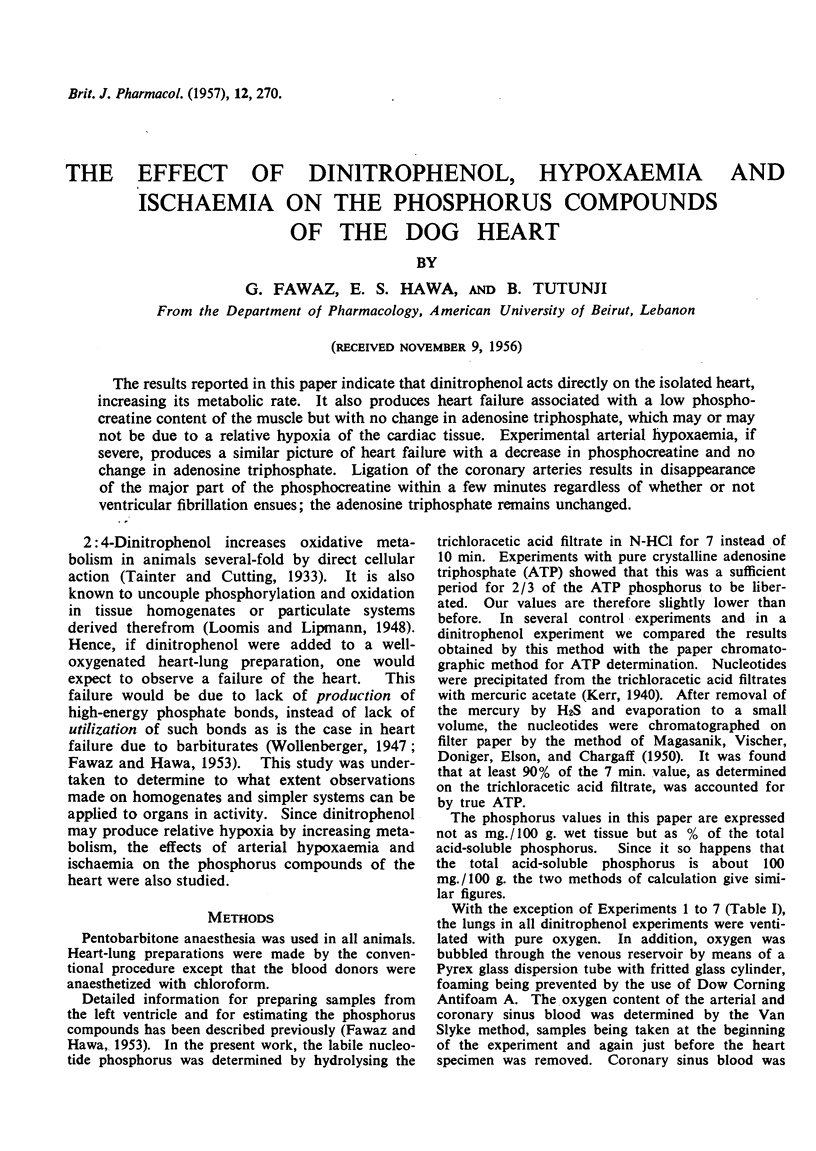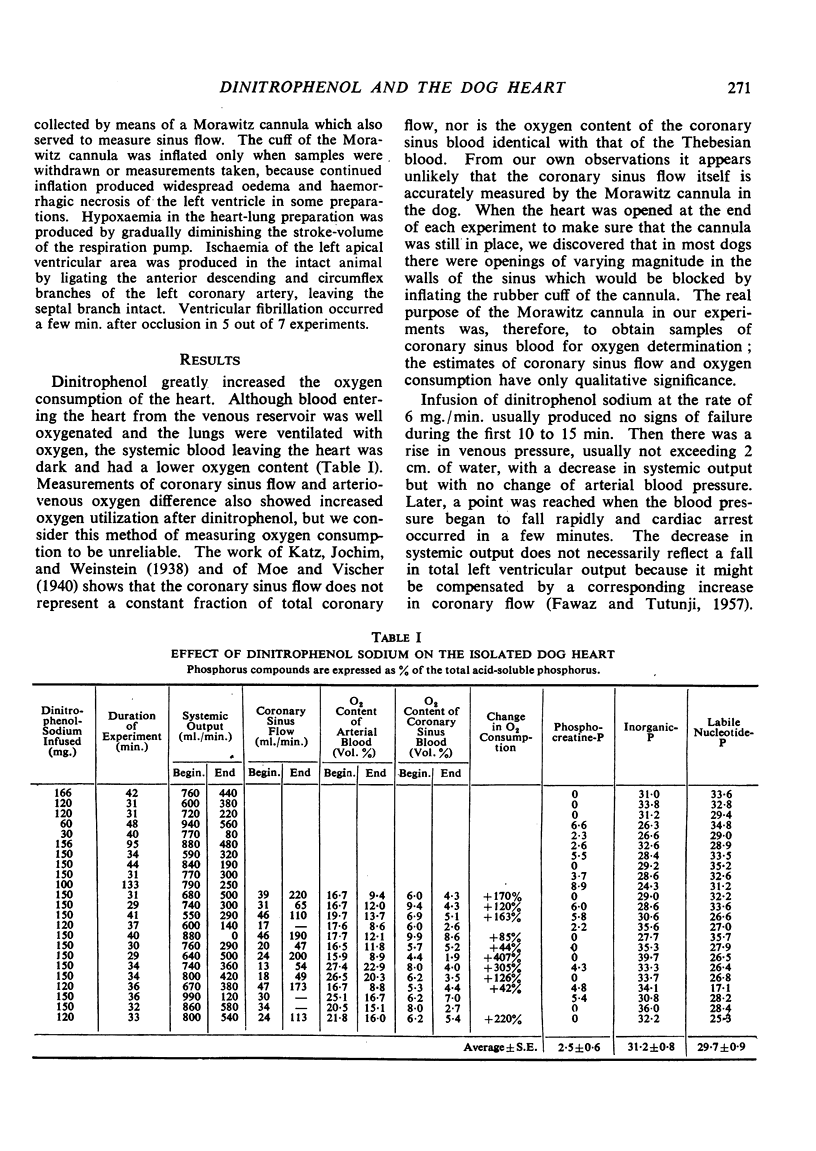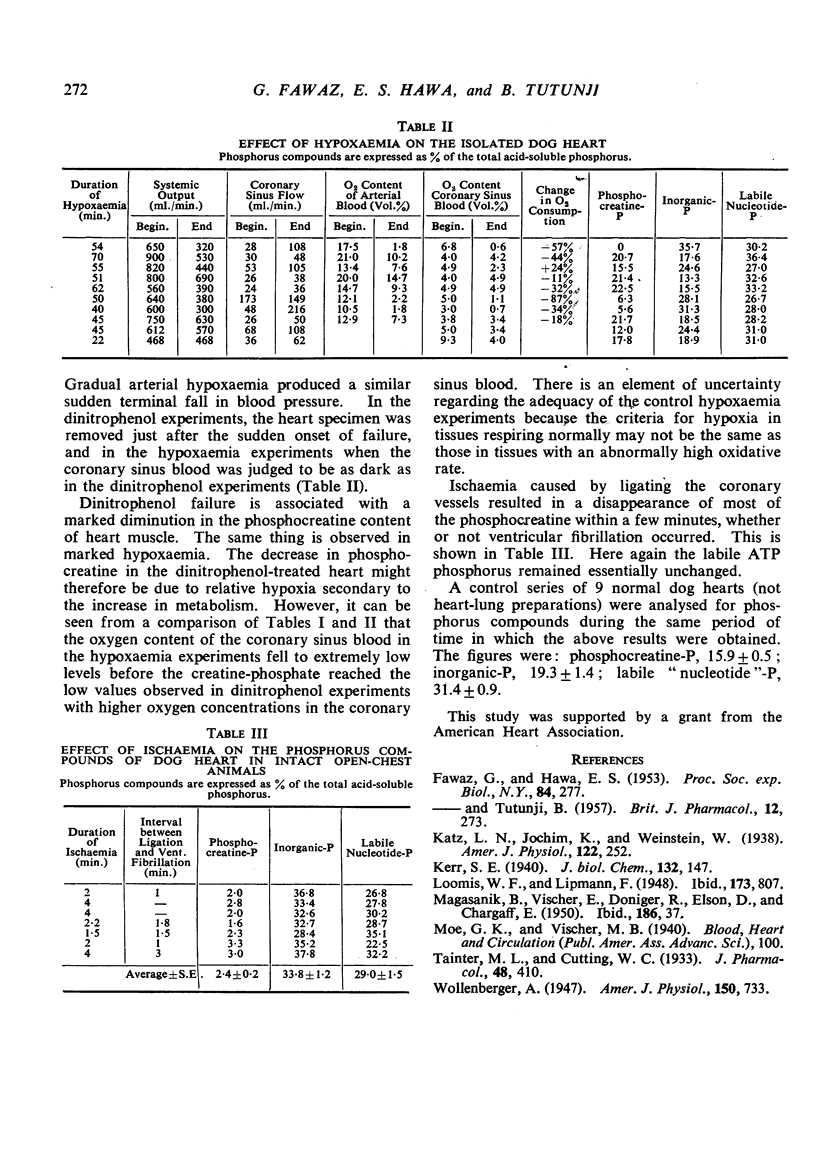Abstract
The results reported in this paper indicate that dinitrophenol acts directly on the isolated heart, increasing its metabolic rate. It also produces heart failure associated with a low phosphocreatine content of the muscle but with no change in adenosine triphosphate, which may or may not be due to a relative hypoxia of the cardiac tissue. Experimental arterial hypoxaemia, if severe, produces a similar picture of heart failure with a decrease in phosphocreatine and no change in adenosine triphosphate. Ligation of the coronary arteries results in disappearance of the major part of the phosphocreatine within a few minutes regardless of whether or not ventricular fibrillation ensues; the adenosine triphosphate remains unchanged.
Full text
PDF


Selected References
These references are in PubMed. This may not be the complete list of references from this article.
- FAWAZ G., HAWA E. S. Phosphocreatine content of mammalian cardiac muscle. Proc Soc Exp Biol Med. 1953 Nov;84(2):277–280. doi: 10.3181/00379727-84-20616. [DOI] [PubMed] [Google Scholar]
- FAWAZ G., TUTUNJI B. The mechanism of dinitrophenol heart failure. Br J Pharmacol Chemother. 1957 Sep;12(3):273–278. doi: 10.1111/j.1476-5381.1957.tb00134.x. [DOI] [PMC free article] [PubMed] [Google Scholar]
- MAGASANIK B., VISCHER E., DONIGER R., ELSON D., CHARGAFF E. The separation and estimation of ribonucleotides in minute quantities. J Biol Chem. 1950 Sep;186(1):37–50. [PubMed] [Google Scholar]


